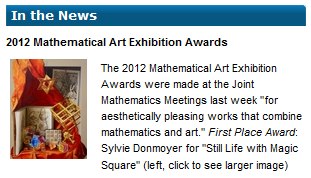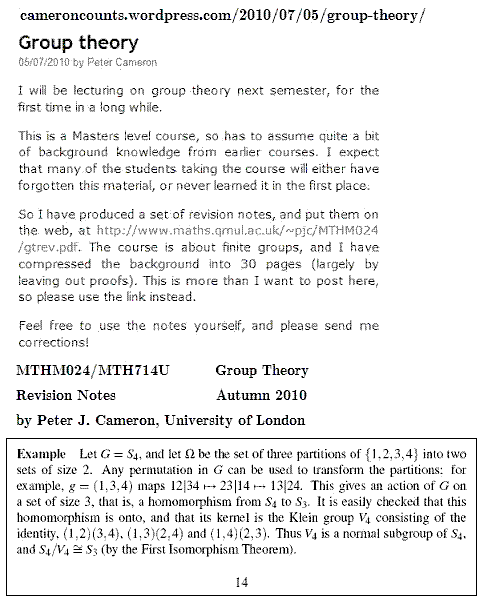Click image for some background.

Shown above is a rearranged version of the
Miracle Octad Generator (MOG) of R. T. Curtis
("A new combinatorial approach to M24,"
Math. Proc. Camb. Phil. Soc., 79 (1976), 25-42.)
The 8-subcell rectangles in the left part of the figure may be
viewed as illustrating (if the top left subcell is disregarded)
the thirty-five 3-subsets of a 7-set.
Such a view relates, as the remarks below show, the
MOG's underlying Galois geometry, that of PG(3,2), to
the hexagrammum mysticum of Pascal.
On Danzer's 354 Configuration:

"Combinatorially, Danzer’s configuration can be interpreted
as defined by all 3-sets and all 4-sets that can be formed
by the elements of a 7-element set; each 'point' is represented
by one of the 3-sets, and it is incident with those lines
(represented by 4-sets) that contain the 3-set."
— Branko Grünbaum, "Musings on an Example of Danzer's,"
European Journal of Combinatorics , 29 (2008),
pp. 1910–1918 (online March 11, 2008)
"Danzer's configuration is deeply rooted in
Pascal's Hexagrammum Mysticum ."
— Marko Boben, Gábor Gévay, and Tomaž Pisanski,
"Danzer's Configuration Revisited," arXiv.org, Jan. 6, 2013
For an approach to such configurations that differs from
those of Grünbaum, Boben, Gévay, and Pisanski, see
Classical Geometry in Light of Galois Geometry.
Grünbaum has written little about Galois geometry.
Pisanski has recently touched on the subject;
see Configurations in this journal (Feb. 19, 2013).



































